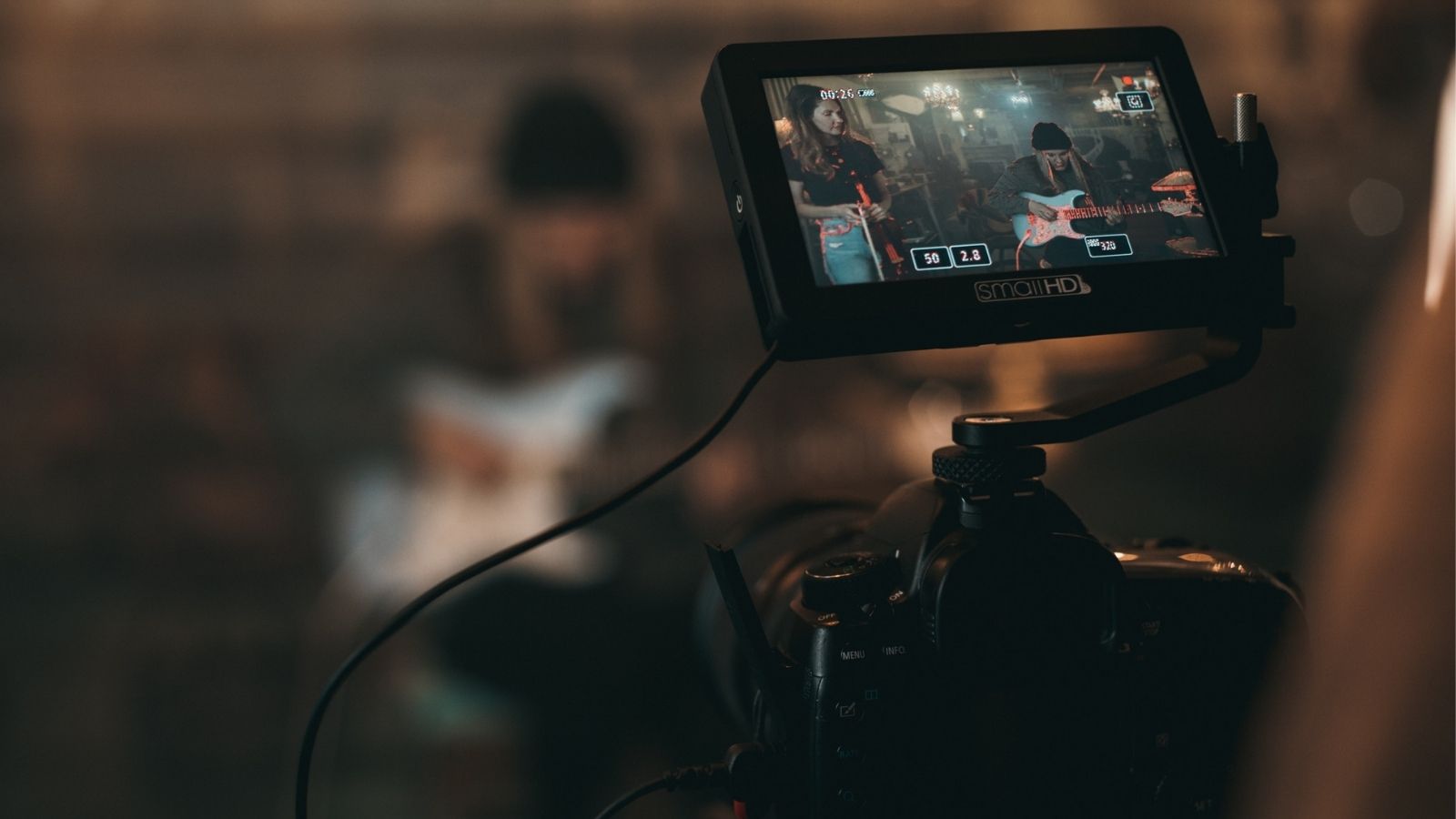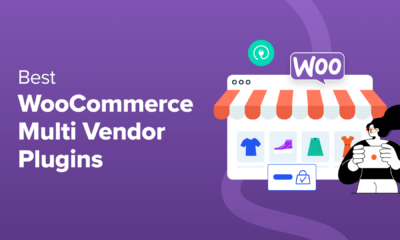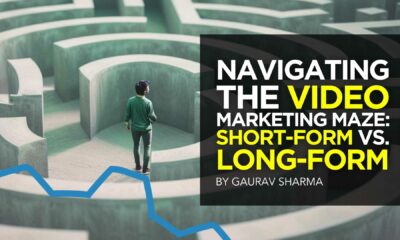SOCIAL
Is short-form video falling off?

Photo by Kyle Loftus on Pexels
Opinions expressed by Digital Journal contributors are their own.
Short-form video is a popular trend that continues to gain a lot of traction. The concept of reels is now commonly seen through various online social media platforms, and many brands and content creators have jumped on the bandwagon — creating short-form videos to engage with their audience.
However, there is also a possibility that the trend of short-form might only continue to live for a while. After all, Vines are a perfect example of how the trend for short videos died after some time. So, is short-form video falling off? Let’s shed light on this topic in this article to give you a better idea
What Does a Short-form Video Entail?
Short-form video refers to video content that is typically shorter in duration. The time frame for these videos can be from a few seconds to a couple of minutes. These videos are designed to deliver a concise and engaging message quickly. As a result, short-form videos have become a popular choice for many brands.
They have gained immense popularity due to their ability to capture viewers’ attention in our era of content overload and shortened attention spans. You’ll see short videos on most social media platforms, from Instagram to TikTok.
Is Short-form Video Falling Off?
According to statistics, 33% of marketers plan on using the short video type of content in 2023. The survey for 1000+ marketers shows that most of them are increasing their efforts to make the most out of this type of content. It is safe to say that short-form video is here to stay.
It has become a growing choice for many influencers, brands, and content creators. This is because there are various benefits that you can get from short-form video. Let’s go over them to get a better idea about it.
- Quite Engaging and Catchy:
Short-form videos are quite engaging and catchy. In a fast-paced world, people desire to obtain content that doesn’t take up too much of their time. And that is something the short-form videos can help you with. It might have happened to you.
You would have opened TikTok only for a second. However, you would have found yourself going through different videos for the next couple of hours. The global span of viewers’ attention is getting shorter and shorter. Therefore, videos that are short and engaging will continue to gain more and more traction.
- Easy to Share:
Another great thing about short videos is that they are pretty easy to share. It would take a few seconds for you to share the short-form videos. The other person receiving the video will likely watch it, too, since doing so will take considerably less time.
Brands use short-form videos, so it is easy for their target audience to share them. As a result, it can start a conversation and allow you to increase your brand reputation much quicker. A short-form video management company can deploy a strategy around short videos to increase engagement with your target audience.
- Digestible and Easy to Consume:
A long video might be something that you don’t want to spend your time on. Even though the video may be engaging, the viewer may lose interest at any point. Short videos, on the other hand, are easier to consume.
You can watch them on the go since it only takes a few seconds. There is no need to sit for 10 to 15 minutes and watch the entire video completely. In addition to that, the short-form video will allow you to get information much quicker.
Is the Long-form Video Not Effective Anymore?
The trend for short-form videos is growing, but long-form videos are still alive. Some still consume this type of content, and you cannot simply put long-form videos out of the picture. These types of videos are great for educational purposes. They can help you provide an in-depth understanding to your target audience about any particular topic. Doing so just might allow you to position your brand as an industry leader. Not only this, long-form videos also help you to create a better connection with your target audience.
In conclusion, the importance of short-form videos cannot be underscored. They are engaging and allow you to capture the attention of your target audience. It’s also important to note that a campaign should always be executed bearing the target audience and the business objectives in mind. A business should consider using the right form of video for their marketing efforts that ties into the results they seek.
SOCIAL
Snapchat Explores New Messaging Retention Feature: A Game-Changer or Risky Move?

In a recent announcement, Snapchat revealed a groundbreaking update that challenges its traditional design ethos. The platform is experimenting with an option that allows users to defy the 24-hour auto-delete rule, a feature synonymous with Snapchat’s ephemeral messaging model.
The proposed change aims to introduce a “Never delete” option in messaging retention settings, aligning Snapchat more closely with conventional messaging apps. While this move may blur Snapchat’s distinctive selling point, Snap appears convinced of its necessity.
According to Snap, the decision stems from user feedback and a commitment to innovation based on user needs. The company aims to provide greater flexibility and control over conversations, catering to the preferences of its community.
Currently undergoing trials in select markets, the new feature empowers users to adjust retention settings on a conversation-by-conversation basis. Flexibility remains paramount, with participants able to modify settings within chats and receive in-chat notifications to ensure transparency.
Snapchat underscores that the default auto-delete feature will persist, reinforcing its design philosophy centered on ephemerality. However, with the app gaining traction as a primary messaging platform, the option offers users a means to preserve longer chat histories.
The update marks a pivotal moment for Snapchat, renowned for its disappearing message premise, especially popular among younger demographics. Retaining this focus has been pivotal to Snapchat’s identity, but the shift suggests a broader strategy aimed at diversifying its user base.
This strategy may appeal particularly to older demographics, potentially extending Snapchat’s relevance as users age. By emulating features of conventional messaging platforms, Snapchat seeks to enhance its appeal and broaden its reach.
Yet, the introduction of message retention poses questions about Snapchat’s uniqueness. While addressing user demands, the risk of diluting Snapchat’s distinctiveness looms large.
As Snapchat ventures into uncharted territory, the outcome of this experiment remains uncertain. Will message retention propel Snapchat to new heights, or will it compromise the platform’s uniqueness?
Only time will tell.
SOCIAL
Catering to specific audience boosts your business, says accountant turned coach

While it is tempting to try to appeal to a broad audience, the founder of alcohol-free coaching service Just the Tonic, Sandra Parker, believes the best thing you can do for your business is focus on your niche. Here’s how she did just that.
When running a business, reaching out to as many clients as possible can be tempting. But it also risks making your marketing “too generic,” warns Sandra Parker, the founder of Just The Tonic Coaching.
“From the very start of my business, I knew exactly who I could help and who I couldn’t,” Parker told My Biggest Lessons.
Parker struggled with alcohol dependence as a young professional. Today, her business targets high-achieving individuals who face challenges similar to those she had early in her career.
“I understand their frustrations, I understand their fears, and I understand their coping mechanisms and the stories they’re telling themselves,” Parker said. “Because of that, I’m able to market very effectively, to speak in a language that they understand, and am able to reach them.”Â
“I believe that it’s really important that you know exactly who your customer or your client is, and you target them, and you resist the temptation to make your marketing too generic to try and reach everyone,” she explained.
“If you speak specifically to your target clients, you will reach them, and I believe that’s the way that you’re going to be more successful.
Watch the video for more of Sandra Parker’s biggest lessons.
SOCIAL
Instagram Tests Live-Stream Games to Enhance Engagement

Instagram’s testing out some new options to help spice up your live-streams in the app, with some live broadcasters now able to select a game that they can play with viewers in-stream.
As you can see in these example screens, posted by Ahmed Ghanem, some creators now have the option to play either “This or That”, a question and answer prompt that you can share with your viewers, or “Trivia”, to generate more engagement within your IG live-streams.
That could be a simple way to spark more conversation and interaction, which could then lead into further engagement opportunities from your live audience.
Meta’s been exploring more ways to make live-streaming a bigger consideration for IG creators, with a view to live-streams potentially catching on with more users.
That includes the gradual expansion of its “Stars” live-stream donation program, giving more creators in more regions a means to accept donations from live-stream viewers, while back in December, Instagram also added some new options to make it easier to go live using third-party tools via desktop PCs.
Live streaming has been a major shift in China, where shopping live-streams, in particular, have led to massive opportunities for streaming platforms. They haven’t caught on in the same way in Western regions, but as TikTok and YouTube look to push live-stream adoption, there is still a chance that they will become a much bigger element in future.
Which is why IG is also trying to stay in touch, and add more ways for its creators to engage via streams. Live-stream games is another element within this, which could make this a better community-building, and potentially sales-driving option.
We’ve asked Instagram for more information on this test, and we’ll update this post if/when we hear back.
-

 MARKETING7 days ago
MARKETING7 days agoEffective Communication in Business as a Crisis Management Strategy
-

 SEO6 days ago
SEO6 days agobrightonSEO Live Blog
-

 PPC7 days ago
PPC7 days ago9 Ecommerce Trends to Boost Your Business in 2024
-

 SEO5 days ago
SEO5 days agoGoogle March 2024 Core Update Officially Completed A Week Ago
-

 WORDPRESS5 days ago
WORDPRESS5 days ago9 Best WooCommerce Multi Vendor Plugins (Compared)
-
SEARCHENGINES6 days ago
Daily Search Forum Recap: April 25, 2024
-

 WORDPRESS7 days ago
WORDPRESS7 days agoYour New Favorite Way to Develop WordPress Locally – WordPress.com News
-

 SEARCHENGINES5 days ago
SEARCHENGINES5 days agoGoogle March 2024 Core Update Finished April 19, 2024














![The Current State of Google’s Search Generative Experience [What It Means for SEO in 2024] person typing on laptop with](https://articles.entireweb.com/wp-content/uploads/2024/04/The-Current-State-of-Googles-Search-Generative-Experience-What-It.webp-80x80.webp)